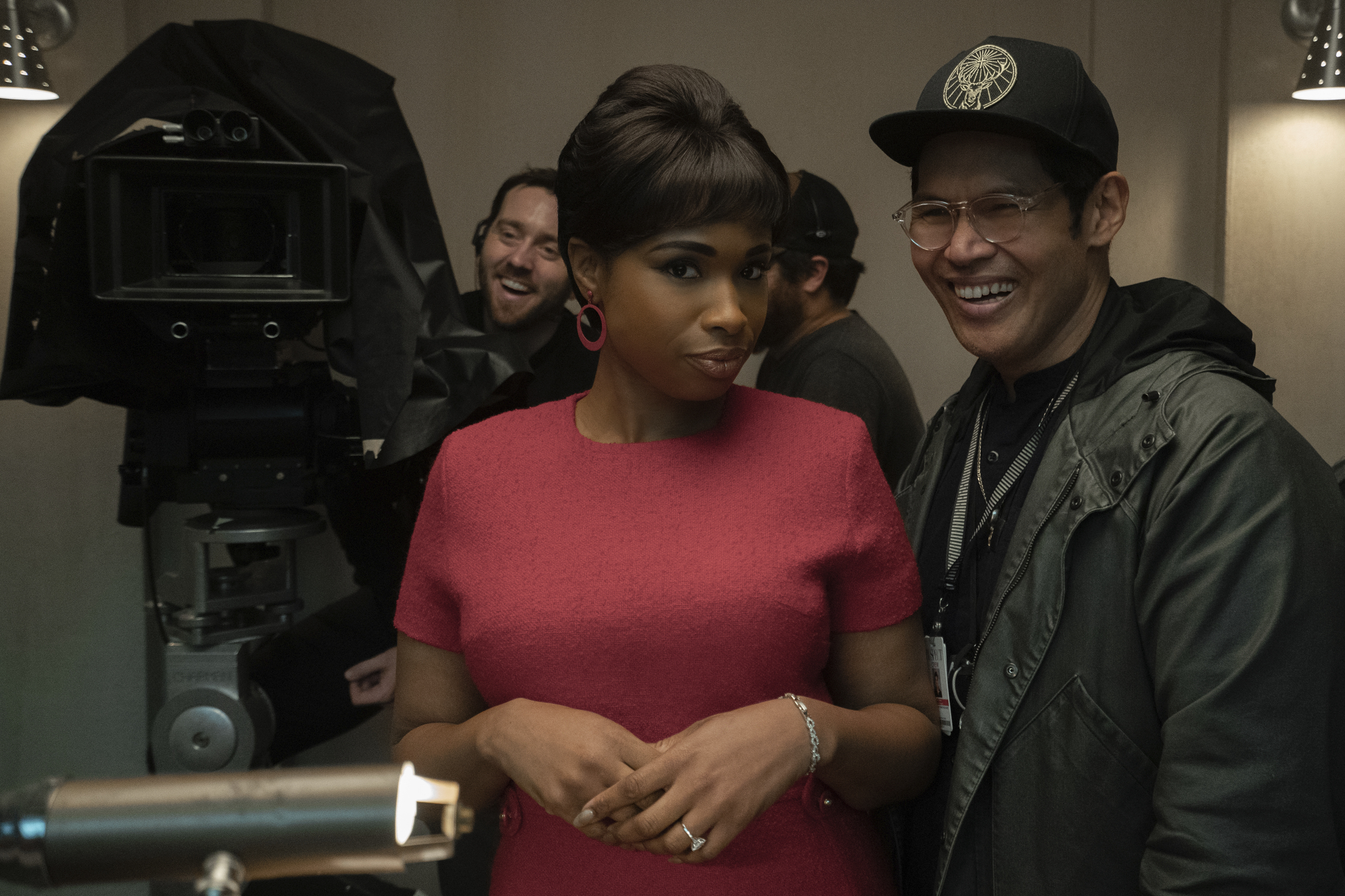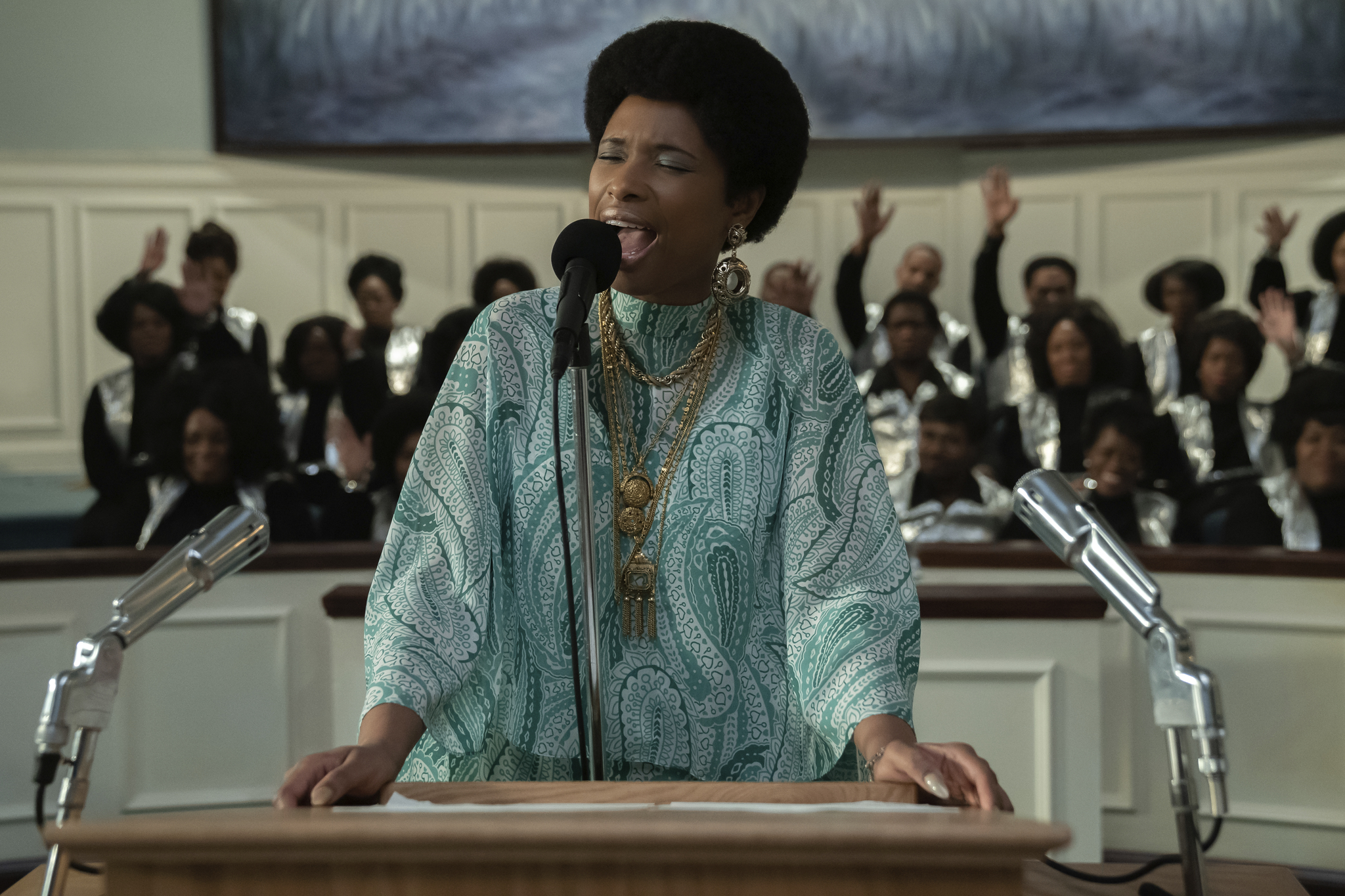To honor Aretha Franklin (Jennifer Hudson) in director Liesl Tommy’s musical biopic “Respect,” costume designer Clint Ramos took a deep dive into the Queen of Soul’s psychology. This enabled him to understand the complex emotional, spiritual, and political forces that drove her musical genius. As a result, Ramos created an aesthetic of heightened realism and glam naturalism with more than 80 costumes custom-made for Hudson.
“Aretha was not a slave to fashion, and she wasn’t also a mannequin,” said the Tony Award-winning Ramos (“Eclipsed,” directed by Tommy). “The best way to describe her was that she was an independent dresser. For me, it really meant that she deployed fashion and clothing in a way to telegraph her emotional state, her spiritual state, and her political state. She was going through a lot of [trauma and abuse] and telegraphing that. She went after the fashion industry for not making clothes that were big enough. So, yes, she might’ve had struggles with her weight. Beyond that, she embraced her body and was a very sensual woman and she understood that.
“The other fascinating thing about Aretha was that in every picture she never looked like she was posed,” he continued. “There’s this humanity that wants to break through. It wasn’t about gloss or fashion. It was really about honesty, and that’s what made us fall in love with her.”
Through her records and performances — which included such hits as “Respect,” “I Never Loved a Man (The Way I Love You), “(You Make Me Feel Like) A Natural Woman,” and “Amazing Grace” — Franklin evoked intense joy, pain, and defiance. Her music reflected her personal struggles, her gospel roots, and the zeitgeist of the ’60s and ’70s. This was important in building a wardrobe for Hudson (who is six inches taller than Franklin). But, for Ramos, the most telling aspect was the Detroit church culture that Franklin was raised in, under the guiding influence of her influential, overbearing father, Baptist pastor C.L. Franklin (Forest Whitaker).

“Respect,” with costume designer Clint Ramos, Jennifer Hudson, and director Liesl Tommy.
MGM/UA
“Aretha was torn between that strict, virginal stuff and her own soulful and sensual impulses,” Ramos said. “In the early part of the movie, Jennifer conveys that classic silhouette with her tight waist. Everything was packaged for her. Her father wanted her to be the Black Judy Garland, and when she leaves her first husband, Ted (Marlon Wayans), she slowly sheds that and starts wearing the color red and shows more of her cleavage, and also embraces a tighter silhouette. A lot of that was what she bumped up against, including her friendship with [political activist] Angela Davis, which resulted in her becoming Afrocentric. She was in control of the way she used clothing, and I think she did it in the most varied and wide ranging way.”
Most of Hudson’s wardrobe was custom-made because she’s taller than Franklin and has a different skin tone, so a certain amount of redesign was necessary. But, also, Ramos wanted to control the color trajectory.
“Her recording career goes from a green/blue trajectory to purple, red, and white,” he said. “When she wore white, it’s poignant, considering what happened to her as a kid [when she was raped and impregnated with her first son, Clarence]. For me, the recurrence of white and even the soft pink was a reminder of that innocence that had been lost and the yearning to get that back, I suppose.

“Respect,” Jennifer Hudson with costume designer Clint Ramos.
MGM/UA
“And then red really is a reminder of her mother, Barbara [Audra McDonald]. Red is not about anything but home. Her mother told her she was in control of her singing. Red, to me, telegraphs agency. I don’t have evidence of Aretha wearing that much purple, but I know Jennifer loves purple, so there are a couple of recording outfits that I did in purple. I also didn’t want to run out of colors.”
However, the iconic metallic gold dress that Franklin wore while performing in Amsterdam was altered to better suit Hudson. It became a beaded pale pink and champagne dress. The original was bought off the rack at Saks Fifth Avenue, and it became easier to conjure a new one.
“It’s completely beaded and it’s not even fabric,” said Ramos. “It’s a grid out of ribbon and all those ribbons were beaded over a very soft, pink shift. And that dress weighs 45 pounds. So, for me, I was careful about which look I needed to pay homage to but I wanted to adjust it to Jennifer’s scale.”

“Respect”
MGM/UA
The other iconic clothing that needed tweaking was the green paisley cape dress that Franklin wore during the recording of “Amazing Grace” in Watts in 1972. Both the color and pattern needed adjusting to complement Hudson.
“There was a lot of pressure to get it right, but I wanted to make sure I didn’t veer too far away to make it unidentifiable,” Ramos said. “I needed to redesign the caftan itself so it wouldn’t swallow Jennifer up. I made it turquoise instead of lime green to work perfectly with Jennifer.”
However, a vintage slip that Hudson wears during a drinking binge holds a special place for Ramos because of its emotional importance. “We didn’t have any information for that scene, and that’s the lowest point in the character’s arc,” he said. “I wanted her to be really vulnerable, so I auditioned a lot of slips, but I didn’t want to call attention to it. She had gone somewhere and went on a drinking binge and that slip had been on her for days. I couldn’t find the right slip and then, out of desperation, I went driving around Atlanta and found it in a vintage store with Jennifer. I’m fond of it because it telegraphs her stage of mind and her [trauma]. To me, it’s very Aretha. It’s one of those moments where I feel I contributed something to the performance.”



